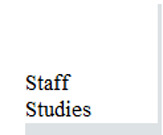
Staff Studies
 |
174 Bank Mergers and Banking Structure in the United States, 1980-98 Stephen A. Rhoades August 2000 |
Summary: The U.S. banking industry experienced a sustained and unprecedented merger movement from 1980 to 1998. During that period, approximately 8,000 bank mergers occurred, involving about $2.4 trillion in acquired assets. The 1990s, especially 1994-98, was a period of numerous large bank mergers, including several that were among the largest in U.S. banking history. This study describes various aspects of that bank merger activity and some of the changes in U.S. banking structure and performance that took place during 1980-98.
With respect to bank merger activity, the study examines the
number and asset size of the acquiring and acquired banks, by year and
state; the identities and sizes of the parties involved in large
mergers; the types of mergers (horizontal and market extension),
markets (urban and rural), and corporate form of the acquirers
(independent banks and bank holding companies); and the number of
mergers and related assets approved by each federal bank regulator.
With
The study found that there was a very large decline in the number of banks and banking organizations from 1980 to 1998. Merger activity remained at a high level throughout most of the period. Nevertheless, the number of banking offices continued to grow despite the large decline in the number of banks and the burgeoning of ATMs. Concentration of U.S. bank deposits among the largest banks increased greatly, especially from 1994 to 1998, when a number of exceptionally large mergers occurred. Concentration increased substantially in many local banking markets, especially in large metropolitan areas, where concentration tended to be relatively low. Initial statistical tests indicate that bank mergers and a decline in the number of banks have played a role in increasing local market concentration. At the same time, the study suggests that "switching costs"--that is, the costs customers incur to change banks--are an increasingly important characteristic of retail banking. Because bank competition within local market areas directly affects retail customers, any trends toward increasing concentration and higher switching costs suggest that antitrust laws may become a constraint on more mergers than in the past. These tendencies suggest that divestitures will likely become a public policy remedy that will be used with increasing frequency.
Full paper (1 MB PDF)
Home | Economic research and data | Staff Studies
Accessibility
To comment on this site, please fill out our feedback form.
Last update: May 29, 2002